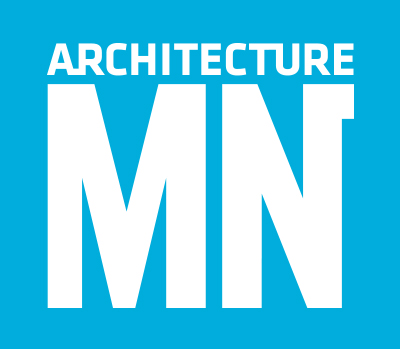A marketing agency in Minneapolis’ North Loop expands vertically with the help of some thrifty architectural invention
By Thomas Fisher, Assoc. AIA
If you want to see what 21st-century innovation looks like, consider the expanded office building that David Salmela, FAIA, has designed for Fast Horse, a rapidly growing Minneapolis marketing and branding firm. The project reflects what Minneapolis-based marketing consultant Simone Ahuja has called “Jugaad innovation,” in a book she has coauthored by the same name, using a Hindi word to describe the ad-hoc, frugal way in which inventors in India innovate with what they have on hand.
Architecture has always involved a degree of Jugaad innovation, since most buildings don’t move and so must work with a given site and context. At Fast Horse, Salmela was presented with an existing two-story, concrete-framed, brick-clad former car repair shop, on a very tight site surrounded by a new Snow Kreilich Architects–designed apartment complex and some renovated warehouse buildings.
To save money and avoid code requirements that would have made the site unbuildable, Salmela kept the existing building and added floors on top of it. And to play off its small size, surrounded by much larger structures, he clad it in black and white metal panels that alternate from one face to another, dividing elevations in half or in quarters. That harlequin strategy cleverly disguises the irregular window arrangements and offers an inexpensive way of making the structure look at once larger and smaller than it really is.
A Jugaad sensibility pervades the company that occupies the building. Fast Horse’s founder, Jörg Pierach, wanted a “freewheeling, wide-open space where nobody has an office. Nobody even has a cubicle,” because “everyone works a little differently.” Pierach’s openness to creativity has contributed to the firm’s recent ranking as No. 3 nationally among independent agencies.
Frugal creativity pervades the building as well, stemming in part from the involvement of Salmela’s project architect, Malini Srivastava, AIA, whose upbringing in Mumbai enabled her to bring an Indian approach to innovation. “Malini’s inventiveness and her persistence in solving problems within a very tight budget made this project happen,” says Salmela.
Jugaad innovation embraces challenging constraints, something evident in this building’s facade. Because the existing building stood so close to the property line on three sides, the front elevation had to accommodate the elevator and fire stairs. Salmela turned this requirement into an opportunity by making the stairs “as open as possible, so that they didn’t block the light into the building,” he says. The steel stairs, steel-clad elevator tower, and galvanized-metal sunscreen create a dynamic facade that reminds us of why the backs of buildings often hold more visual interest than the fronts.
Inside the front door is another example of Jugaad thinking: The reception desk is composed of stacked lumber scraps from the project, conveying the informal way in which Fast Horse employees work. That same warm, rough-hewn quality characterizes wood-clad enclosures in the center of the building, for private conversations not possible in the open offices.
A stair runs up the back of the building, past an existing mezzanine clad in translucent glazing, to the second floor, where the original concrete structure remains exposed. From there, an open steel stair rises through the center of the building, with daylit spaces on either side accommodating Fast Horse staff members working at tables or in comfortable chairs. At the top of the building stands a generous roof terrace.
Ahuja convincingly argues that Jugaad innovation will become a much more common way of creating things in a future where “scarcity is the mother of invention.” A building like Fast Horse shows how architecture will stay in that race.
FAST HORSE
Location: Minneapolis, Minnesota
Client: Fast Horse
Architect: Salmela Architect
salmelaarchitect.com
Principal-in-charge: David Salmela, FAIA
Project architect: Malini Srivastava, AIA
Structural engineer: Meyer Borgman Johnson
General contractor: Watson Forsberg
Size: 8,000 square feet
Completion: January 2015
Photographer: Paul Crosby


